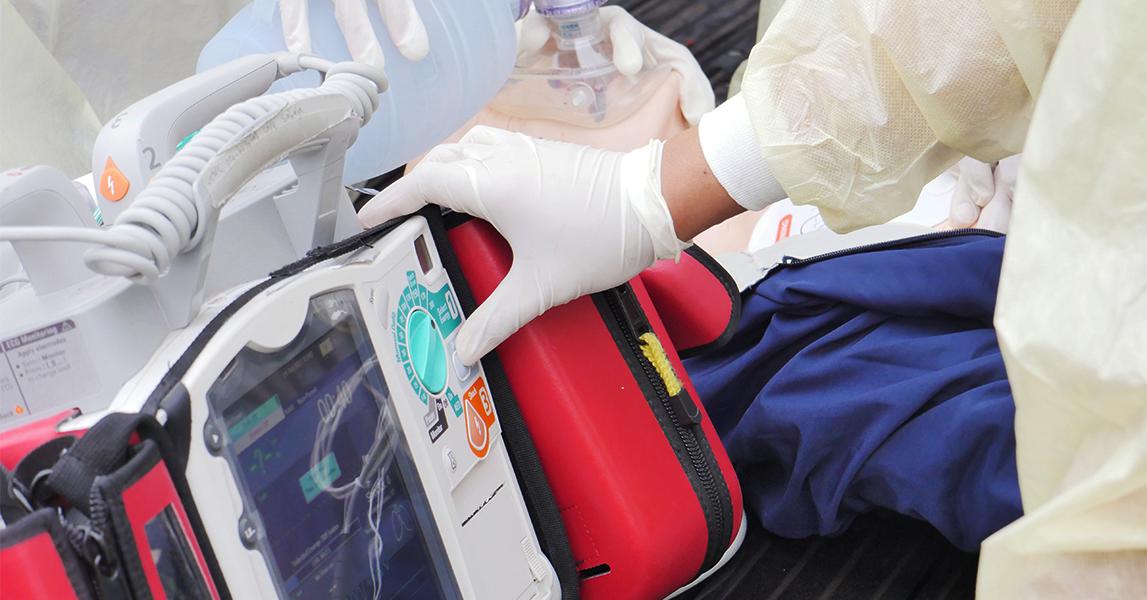The Defibrillator—Treating the Leading Cause of Heart Attacks

When a cardiac event occurs, you usually only have minutes to respond. With so little time at hand, the technique most people turn to is CPR. But is CPR really the way to get a heart beating again?
The heart muscle is a pump controlled by electrical impulses, delivering oxygen-enriched blood to every system in the body. Death encroaches very quickly if the pump fails, as many of the body’s systems will shut down within minutes without oxygen.
CPR is a technique to manually squeeze the blood through the arteries by putting pressure on the heart’s chambers. While this may not do anything toward fixing the pump itself, it can delay the shutdown of the rest of the body for long enough to allow a doctor to arrive in an ambulance with the equipment needed to get the heart working again.
One of those pieces of equipment is called the defibrillator. Many people have seen this device in movies, where it is often used in the most dramatic cases of cardiac arrest. The defibrillator is perhaps the most critical lifesaving element in most heart attacks — because contrary to common understanding, the cause of most fatal heart failures is not that the heart has suddenly stopped beating; it’s actually rhythm trouble. It’s like a drummer who can’t keep time, and the music just can’t go on without that regular pulse.
Rhythm trouble is like a storm in the heart. There’s a lot of electrical activity, but no mechanical coordination. For the heart to work effectively, there must be good synchronization between its parts to keep the blood flowing in the right direction. If the cells are contracting randomly, then the pump will fail even if there’s no blockage or damage to the muscle.
To save a patient’s life, you need to stop that storm immediately, because no one can survive without circulation for very long. To beat the storm, you need to administer a powerful electric attack to overcome the chaos within the heart — so we place the defibrillator pads on the chest and blast the patient with a solid burst of energy. The desired effect is that the heart will be immediately paralyzed, just for a moment; then everything will reset, and the heart’s normal electrical activity will be resumed when things start up again.
There is no doubt in my mind that defibrillators should be everywhere. It’s often the case that bystanders will manually pump a patient’s heart via CPR until a specialist arrives with a defibrillator; sadly, the majority of people who fall victim to cardiac events aren’t so lucky. Ambulances take time to arrive, and the people standing by may have no idea how to perform CPR properly.
Cardiologists like myself now recommend that defibrillators be installed widely, just as fire extinguishers are often found in public buildings. Five star hotels should definitely have one—travelers nowadays tend to consider spending their week in paradise where this kind of medical equipment is available, and Vietnam is sometimes skipped on international itineraries because of the lack of such medical facilities in its resorts.
The main cause of heart attacks is electrical trouble, and the main treatment is the defibrillator. They’re not difficult to use, and the audio instructions tell you exactly what to do. Anyone with a basic understanding of how to use the machine can apply the pads and follow the instructions to give the patient the best chance of recovery.
Dr. Guillaume Nguyen Forton is in charge of cardiology at Family Medical Practice’s clinic in HCMC. He has had 25 years of experience in both Cardiology and intensive care units in France, and has been in Vietnam for over a decade.
 We use cookies on this website to enhance your user experience
We use cookies on this website to enhance your user experience